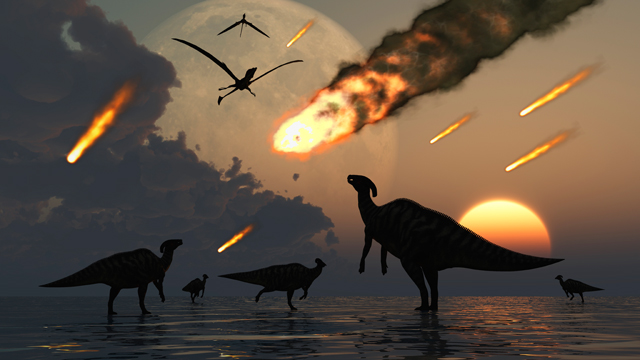Meteoroids Rock! (Except When They Hit You)
More than 1,000 people were injured Friday, when the largest meteor to strike the Earth in two generations disintegrated above the Russian city of Chelyabinsk, raining burning bits of rock that shattered windows and caused a panic.
Before disintegrating into thousands of meteorites, the meteor that Russians watched blazing across the sky in a burst of bright light, probably weighed around 7,700 tons and was about 49 feet across, NASA estimated.

A zinc factory was damaged when meteorites struck the Russian City of Chelyabinsk.(ITAR-TASS/Newscom)
Scientists call such collisions between the Earth and space rocks "impact events." While meteor showers are a common occurrence, really big impact events are rare. The bigger the rock - like the 6-mile wide meteor that killed off the dinosaurs - the less likely a collision.
The largest impact ever recorded occurred in 1908 near the Podkamennaya Tunguska River in Siberia. Known as the "Tunguska event," a meteor or comet estimated to have been 300 feet wide struck the Earth with the force a nuclear bomb 1,000 times larger than Hiroshima.
The explosion in an isolated, rural area is estimated to have felled 80 million trees, covering an area the size of a city.

The Tunguska event in 1908, is the largest recorded impact by an asteroid striking the Earth. (Getty Images)
No event in modern times has come anywhere close to destruction on that scale. But smaller events have led to injury and death around the world.
The first American injured directly by a meteorite was Ann Elizabeth Hodges, a 31-year-old woman living in Sylacauga, Ala., on Nov. 30, 1954.
Hodges was taking a nap, when a meteorite, about the size of a grapefruit, crashed through the roof of her home, bounced off a console radio and struck near her hip. She lived, but got a hell of a welt.

Ann Elizabeth Hodges was struck by a meteorite while inside her home in Sylacauga, Ala. in late 1954. (Jay Leviton/Time & Life Pictures/Getty Images)
More recently, more than 200 people were mysteriously sickened following the impact of a meteorite near Carancas, Peru, near Lake Titicaca, in 2007.
As villagers went to inspect the impact site they began to feel ill, reporting different symptoms including nausea and vomiting. Peruvian scientists later determined that the meteorite itself was not toxic but had landed on, and heated, a natural arsenic deposit.
No impact event in the entire course of human history comes anywhere close to the giant meteors that fell to Earth, causing mass extinctions including the dinosaurs 65 million years ago.
That object is believed to have been more than 6 miles across.

The dinosaurs are beleived to have been killed off 65 million years, ago following the impact of a giant meteor. (Corbis)